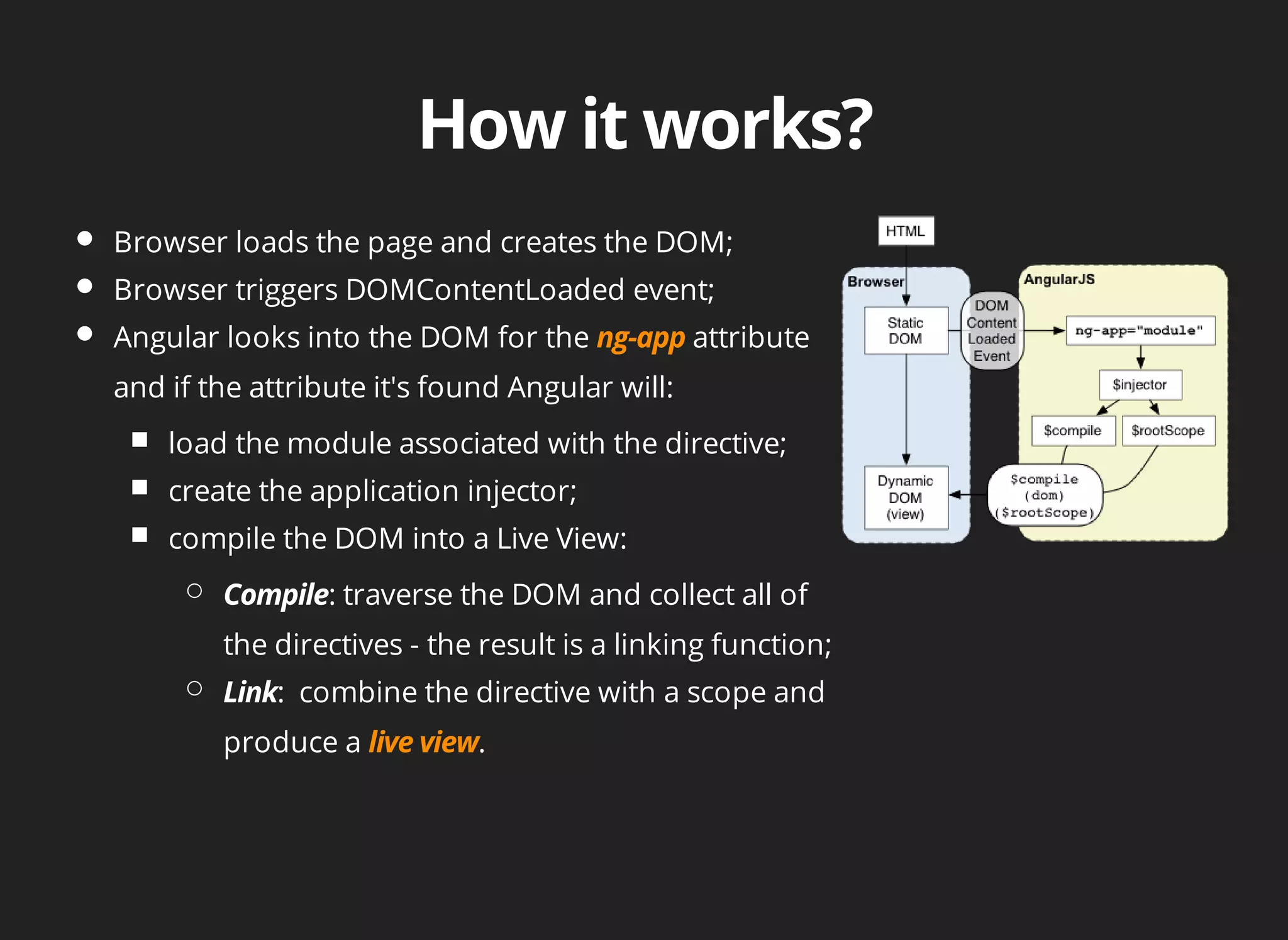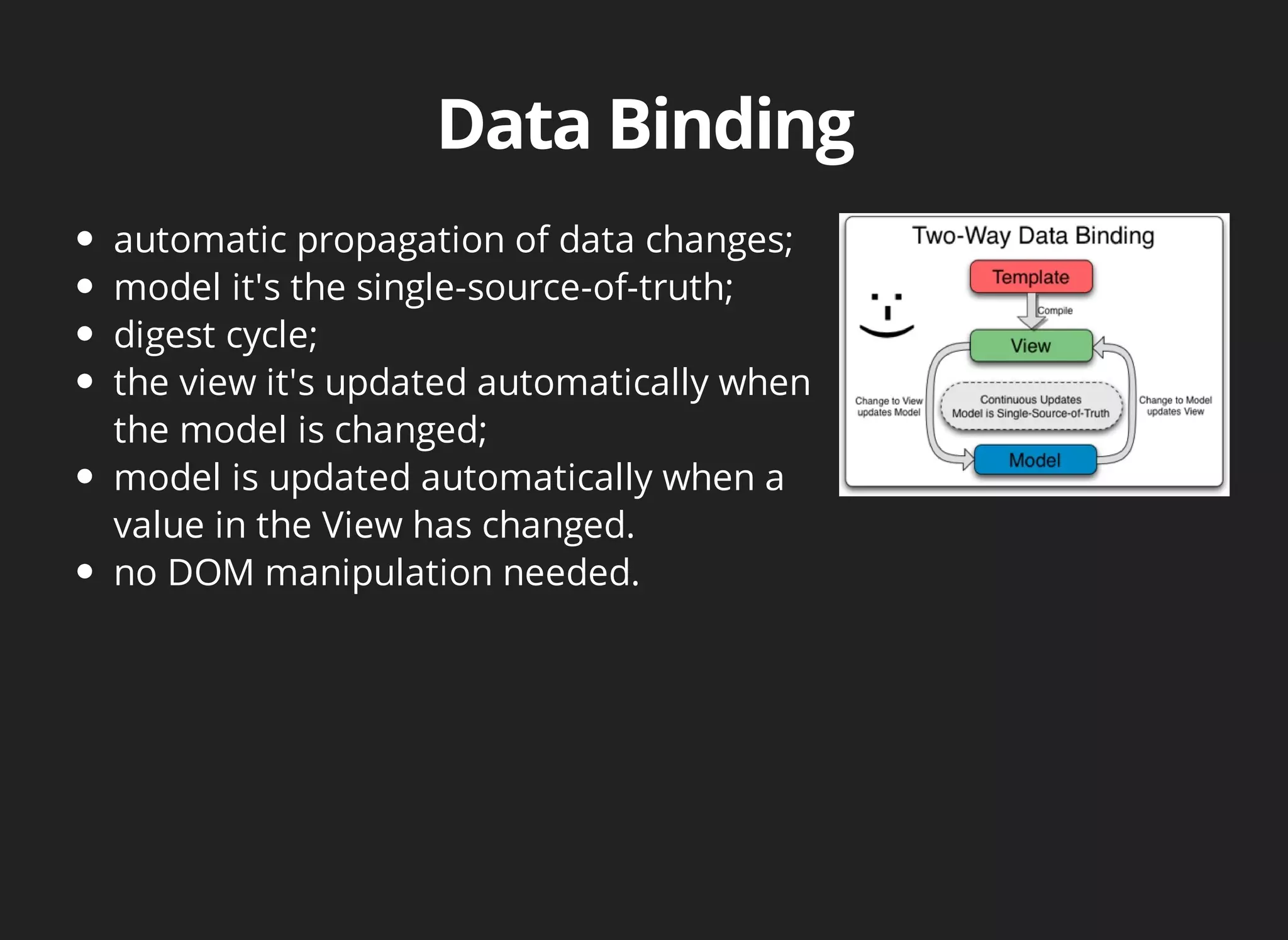The document discusses the architecture of a web application, detailing the model-view-controller (MVC) design pattern and the role of AngularJS in creating dynamic web applications. It highlights the interaction between user input, the model, and the view, illustrating how Angular facilitates two-way data binding and automatic updates. The text also covers practical implementation aspects such as routing, dependency injection, and testing methodologies.


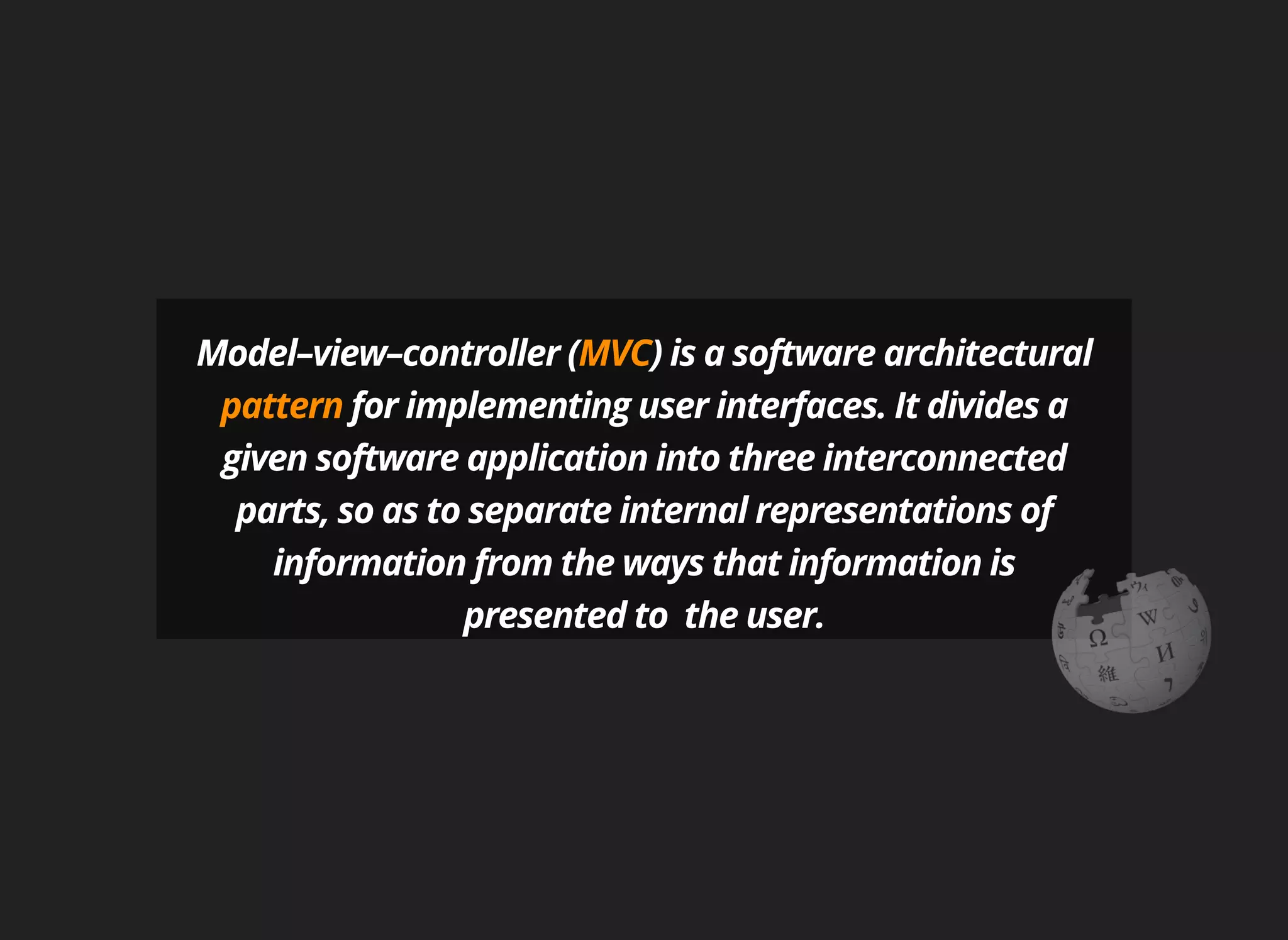
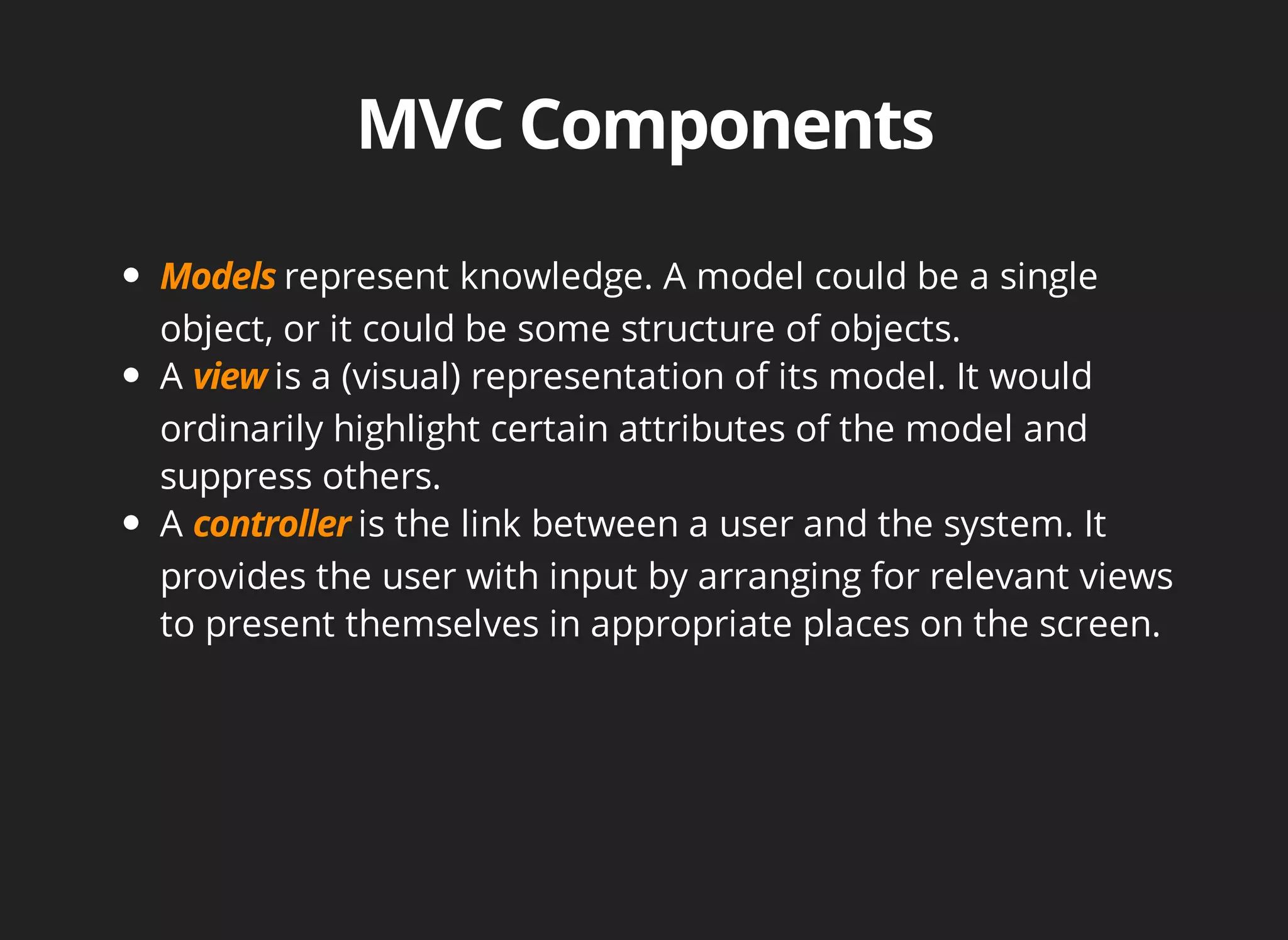
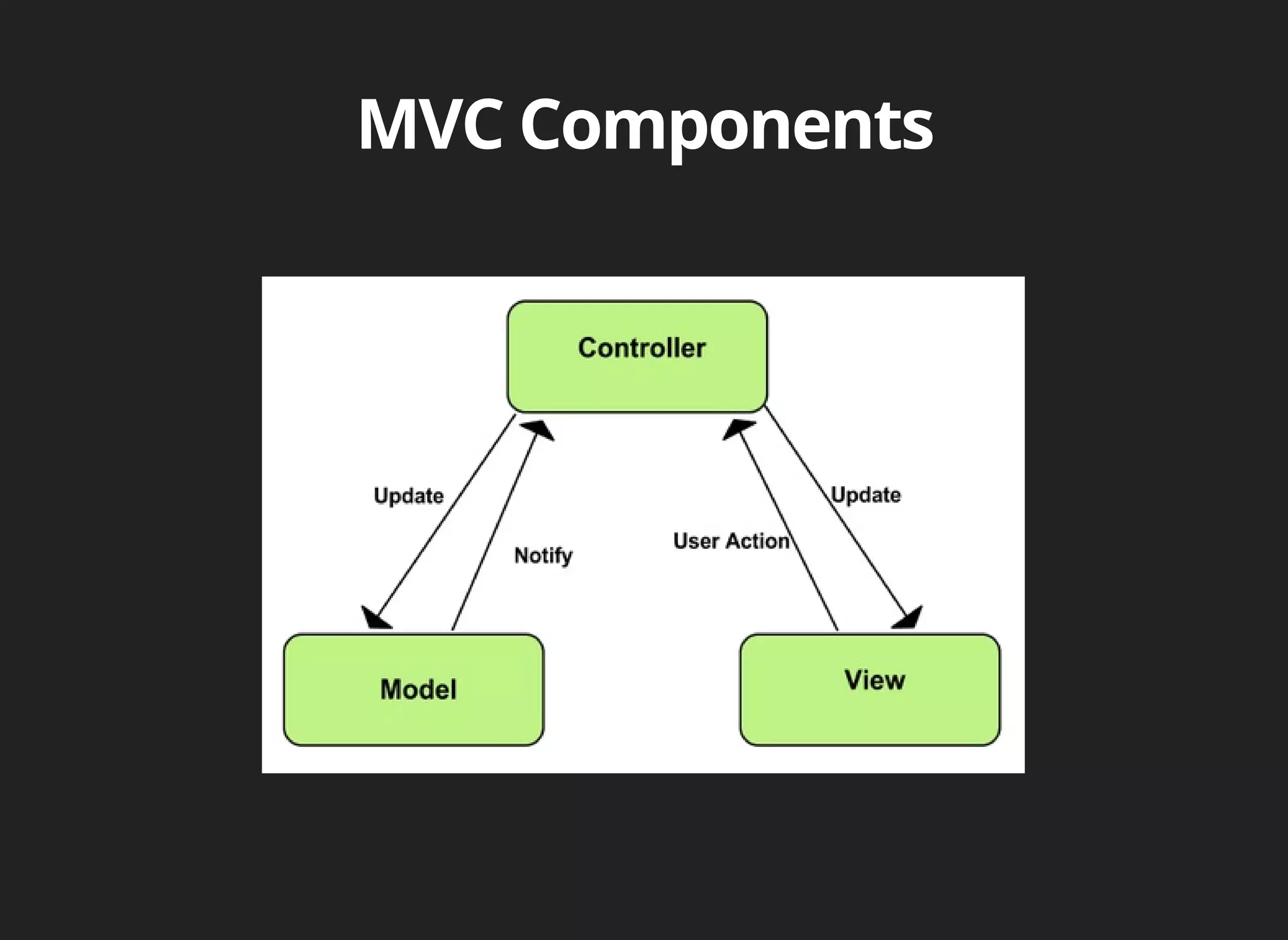
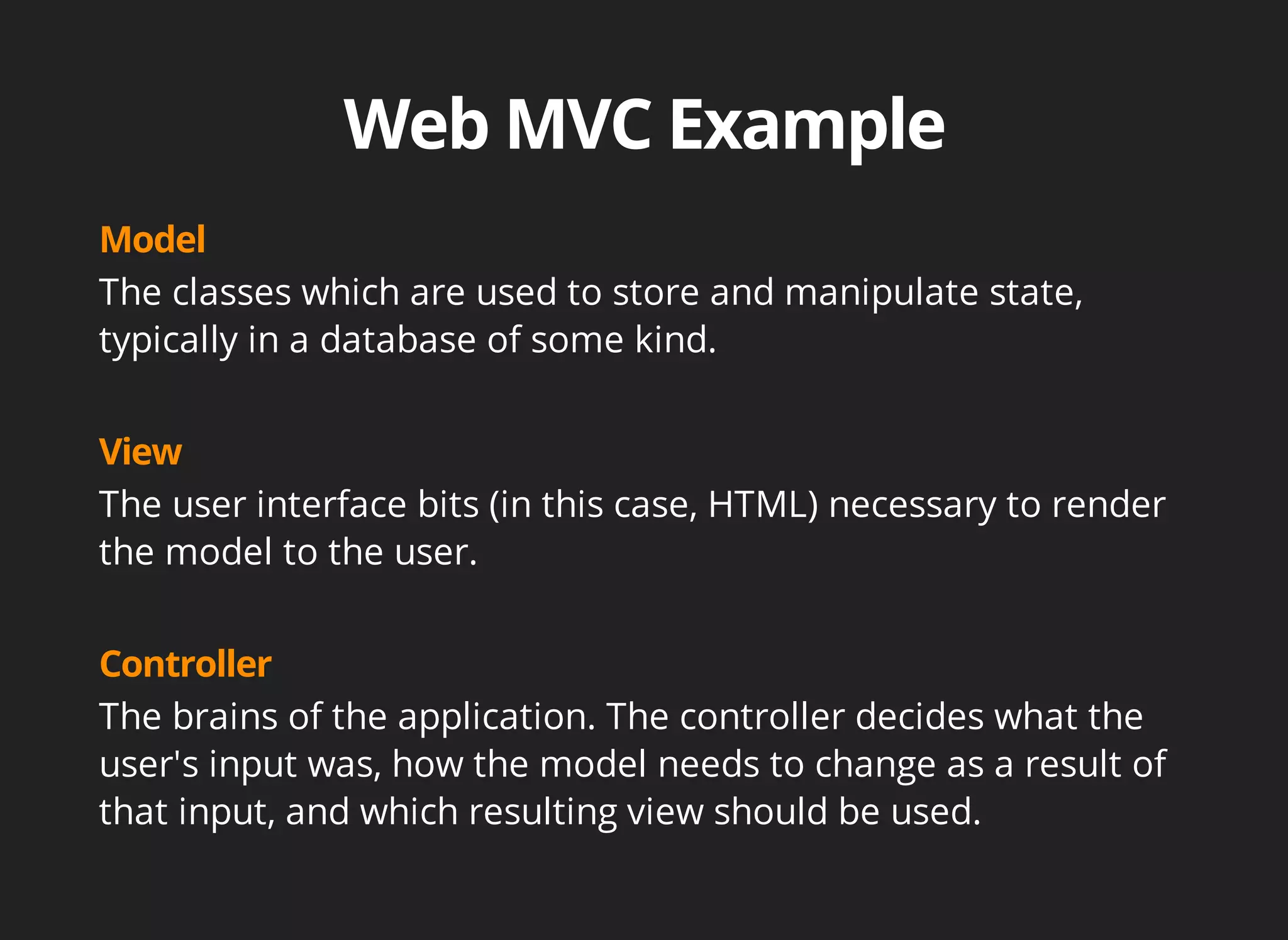

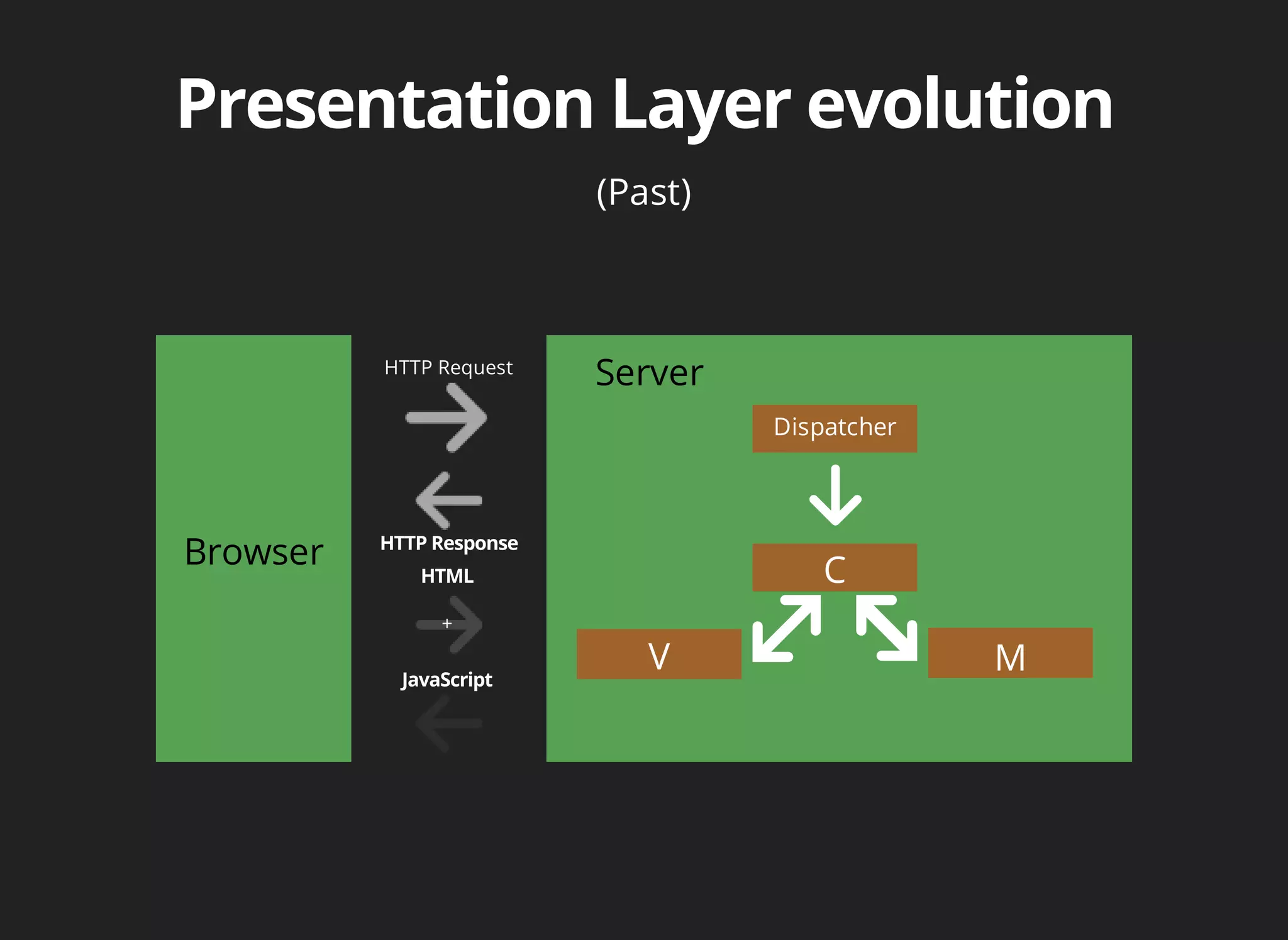
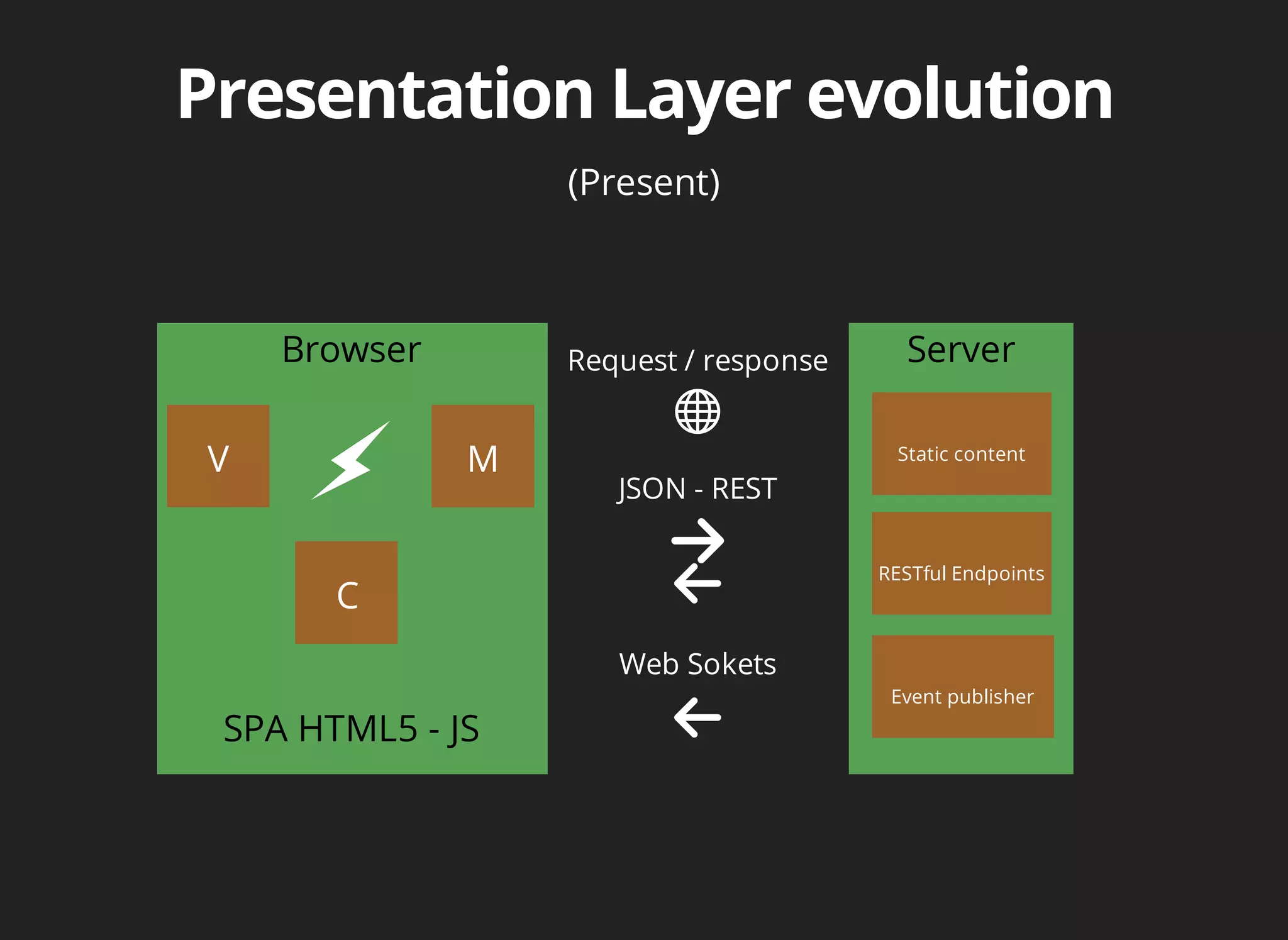
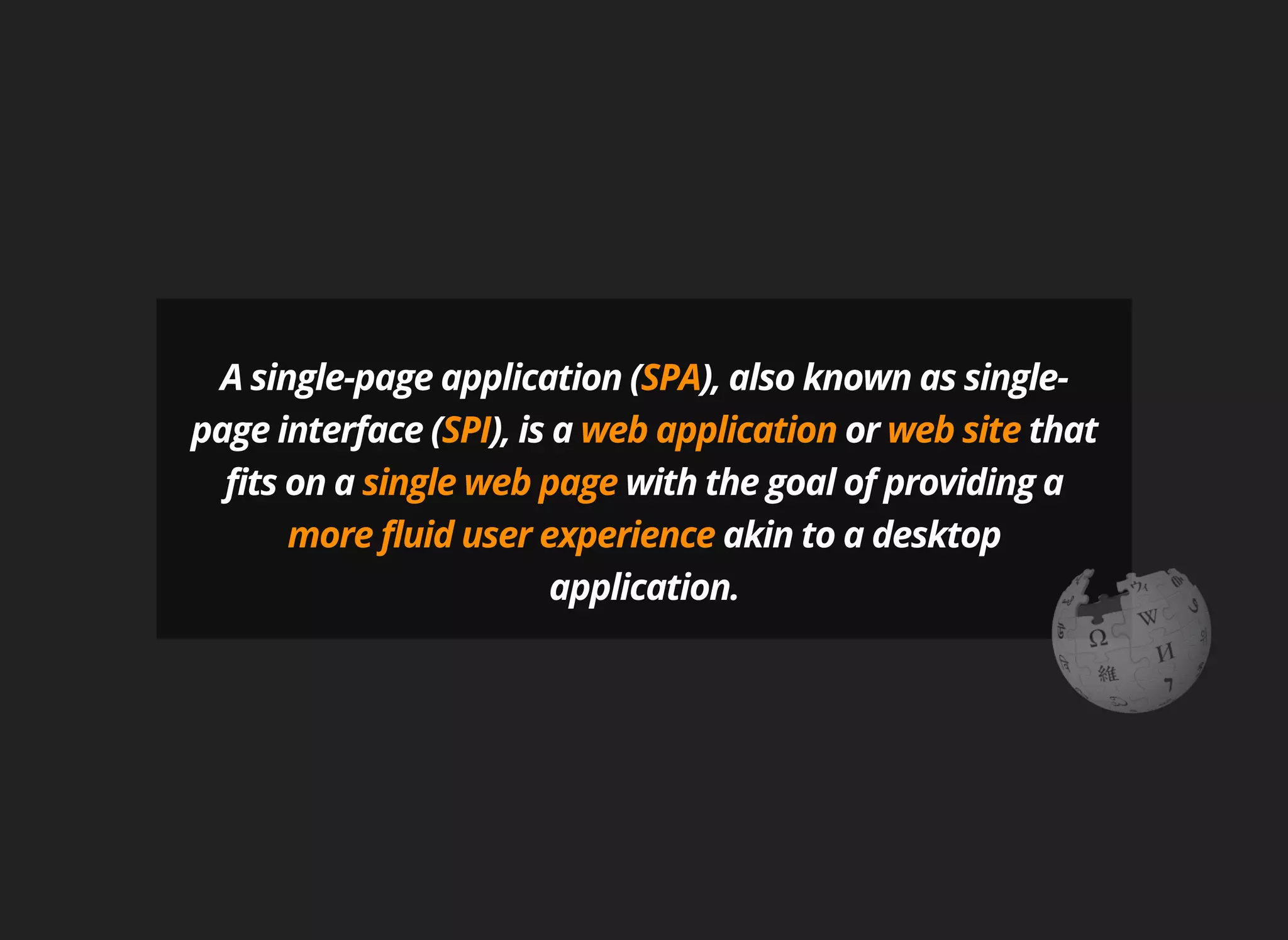
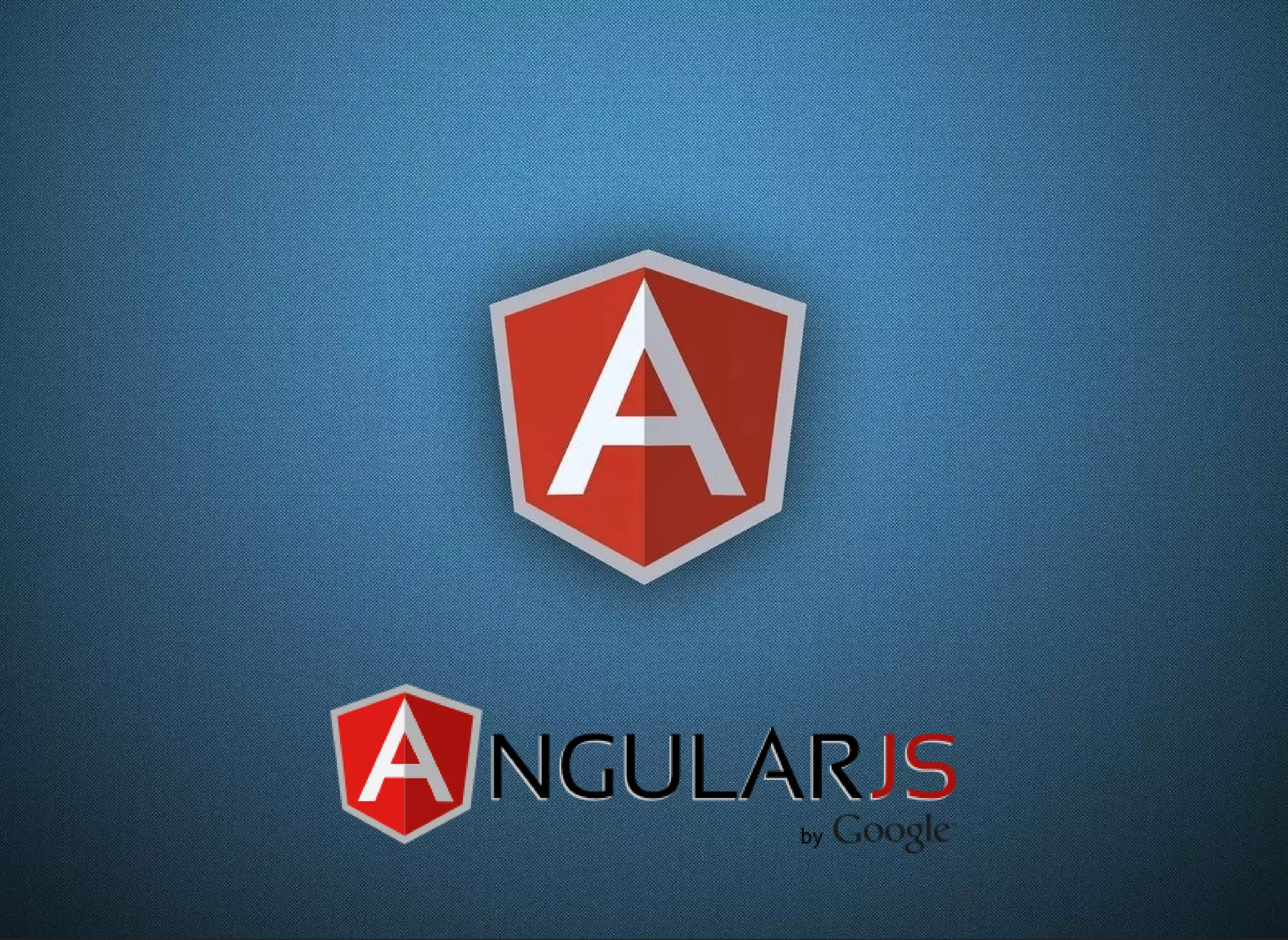
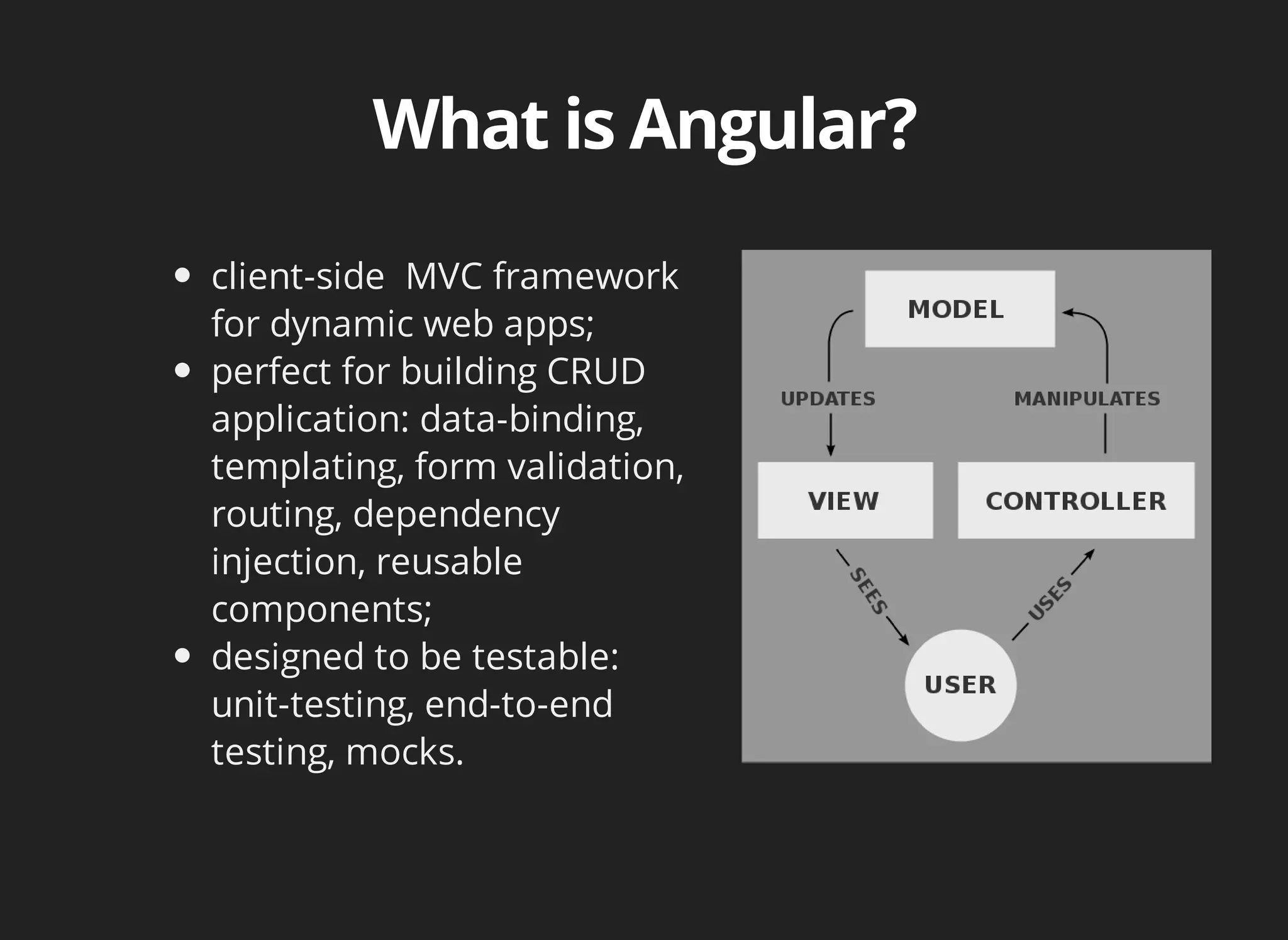
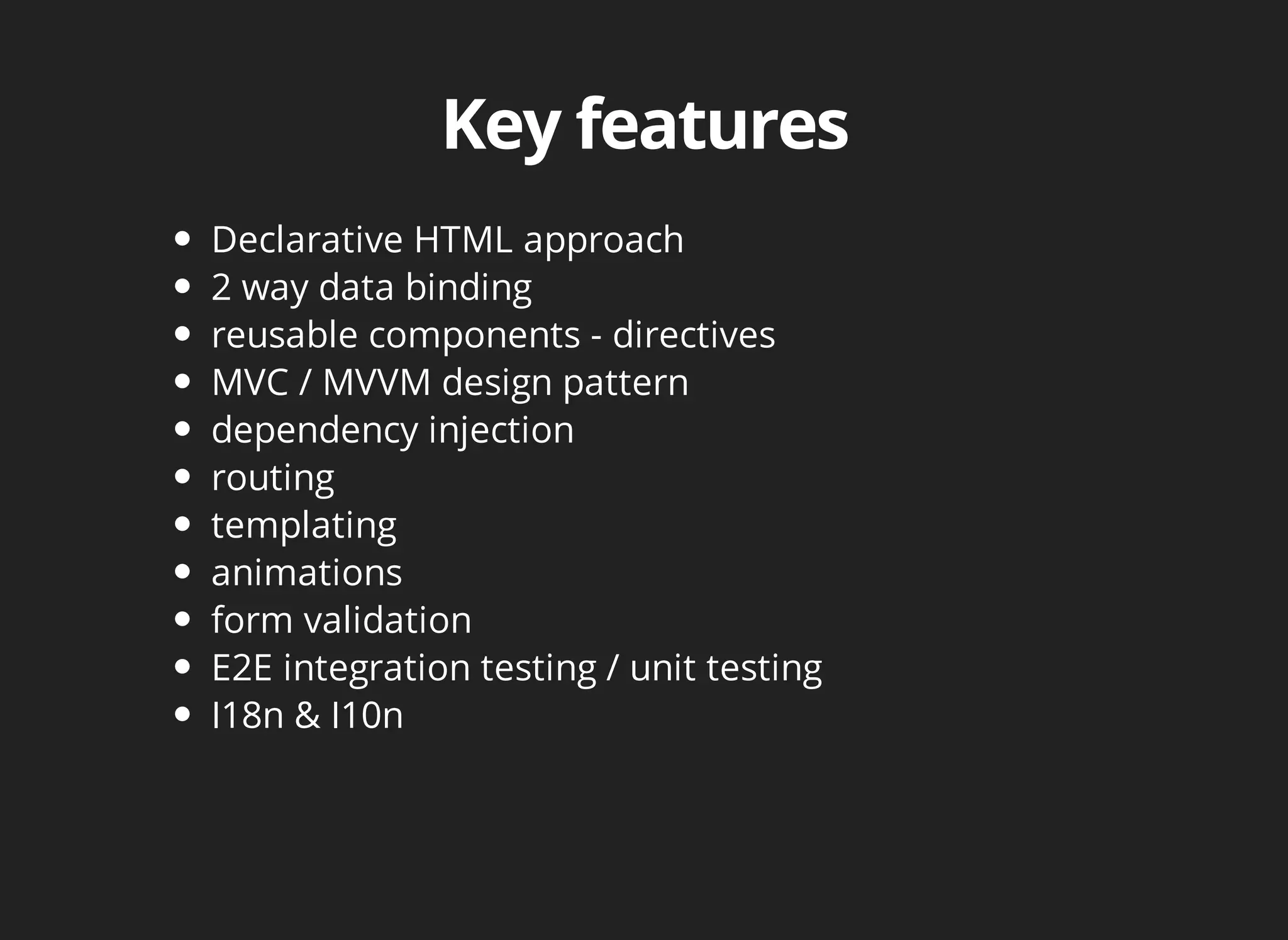
![<!DOCTYPE html>
<html ng-app="myApp">
<head>
<title>Angular app</title>
<script src="path/to/angular.js">
{{name}}
//app.js
angular
.module('myApp', [])
.controller('MyCtrl', function($scope){
$scope.name = 'World';
});
Plunker Example](https://image.slidesharecdn.com/client-side-mvc-angular-141016024646-conversion-gate02/75/Client-Side-MVC-Angular-14-2048.jpg)

